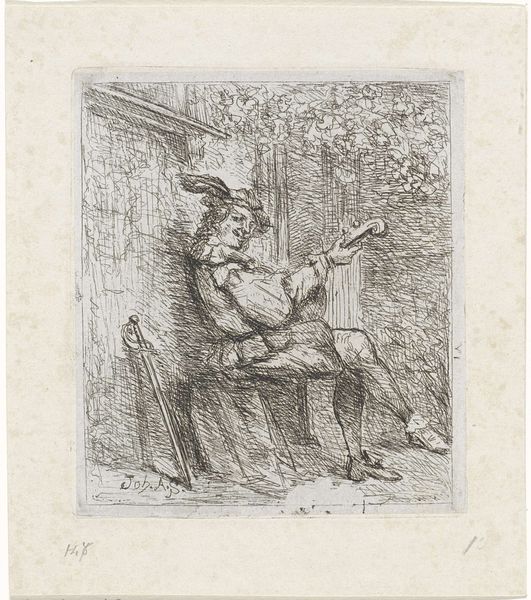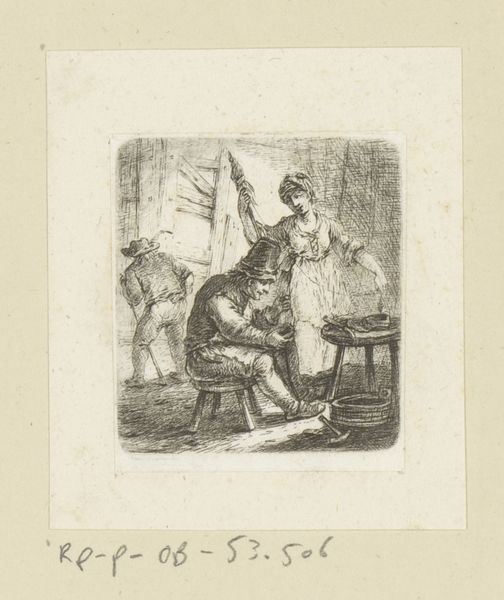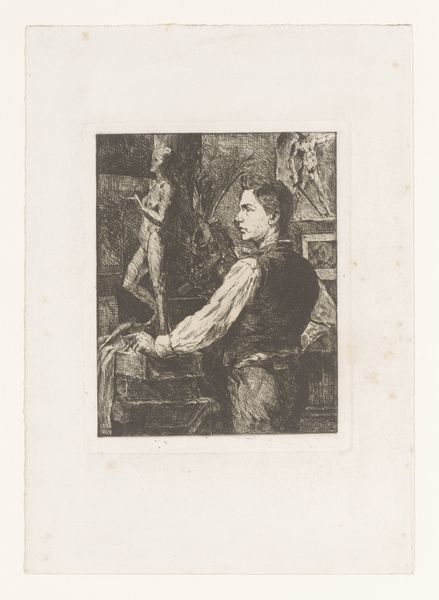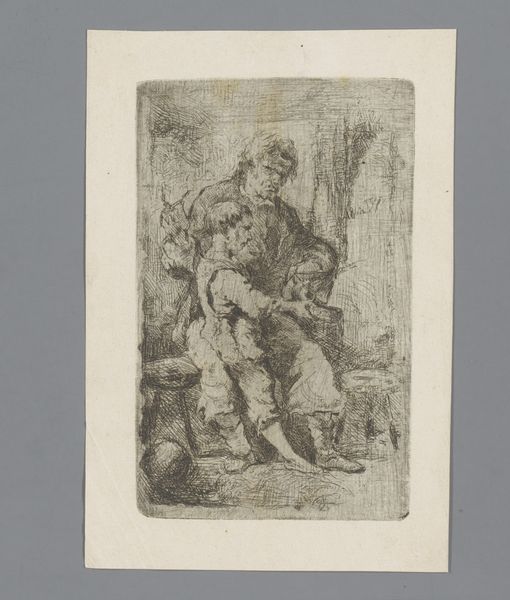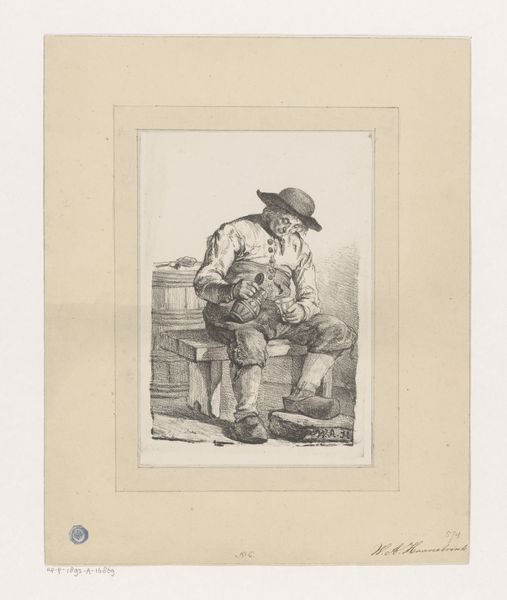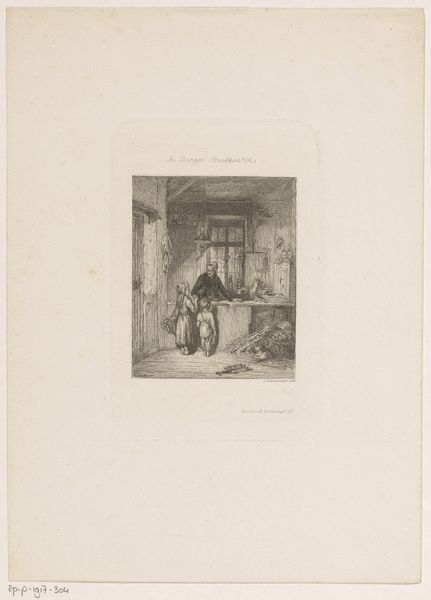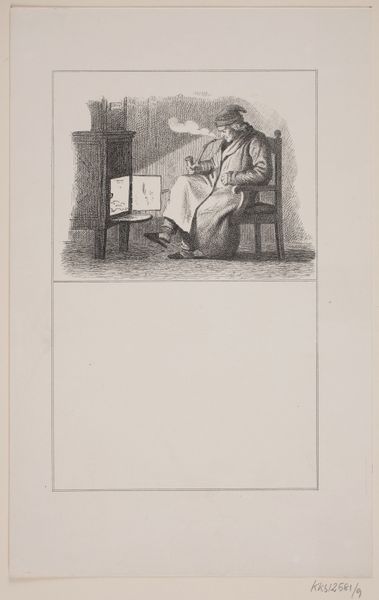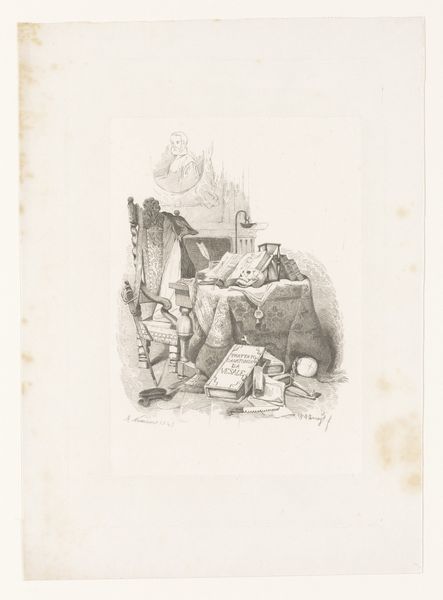
drawing, ink, pen
#
drawing
#
light pencil work
#
pencil sketch
#
old engraving style
#
landscape
#
personal sketchbook
#
ink
#
idea generation sketch
#
ink drawing experimentation
#
pen-ink sketch
#
ink colored
#
sketchbook drawing
#
pen
#
genre-painting
#
sketchbook art
#
realism
Dimensions: height 182 mm, width 114 mm
Copyright: Rijks Museum: Open Domain
Curator: This is Louis Antoine Carolus’ “Dorpeling met een waterkan,” made sometime between 1824 and 1865. It's currently held at the Rijksmuseum. What strikes you about this particular drawing? Editor: It's the man’s stillness, actually. He seems weary, taking a pause perhaps from the day's labor, everything captured in these delicate ink lines. Curator: Exactly. The drawing encapsulates genre painting, depicting everyday life of that period with its themes and settings. What about the visual economy employed by the artist? Editor: There’s a remarkable sensitivity in the use of space; despite the limited detailing, we still sense the village backdrop, a humble environment framing his life and efforts, his connection with the work of carrying a water jug. Curator: How might Carolus' art shape or challenge dominant cultural narratives concerning labour and rest? This image offers some very interesting cues. Editor: The drawing appears straightforward initially. Yet I consider that the man might symbolize resistance, as he’s claiming space to breathe, outside labor schedules; an act that disrupts expectations and celebrates resilience amid challenges. Curator: Yes. And Carolus positions such daily occurrences within a social landscape. How might its presentation and eventual exhibit to audiences mold opinions toward laborers? Editor: When audiences look at such realistic pieces they face social realities reflected by an ordinary worker within a village—promoting either acknowledgment, or perhaps more importantly—empathy across diverse social strata while highlighting the essential dignity found within quotidian labors. Curator: Precisely. And as visitors engage such drawings, they might reflect on social progress through visual records which impact understandings about laborers and their evolving contributions to society throughout historical periods. Editor: Indeed. Analyzing the intersectional components offers nuanced historical understandings impacting our viewpoints concerning societal evolutions surrounding working people today; therefore drawings act to illuminate continuing social challenges that urge actions of justice and equity even within current landscapes.
Comments
No comments
Be the first to comment and join the conversation on the ultimate creative platform.
